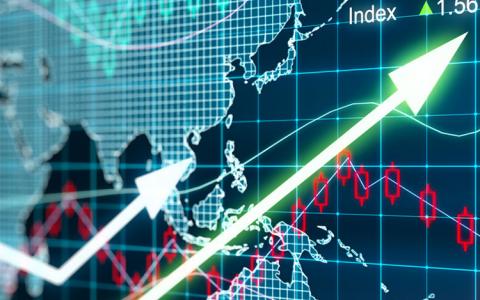
The stock market, before Wednesday, rallied strongly as the coronavirus curve flattened. Imagine, now, the magnitude of the rally if the coronavirus were vanquished.
President Donald Trump has said that, due to pent-up demand, the economy will eventually “pop back like nobody’s ever seen before.”
Regardless of your political views, it’s worth reviewing that scenario.
At The Arora Report we conduct scenario analysis. That is a reason we were able to, on Jan. 22, identify a potential drop in the stock market due to the coronavirus.
And now, in our analysis, there is a reasonable probability that the U.S. stock market may see the biggest rally ever post-coronavirus.
Many investors are asking if they should they jump all-in. The answer is “no” because the current rally is about 65% due to a short-squeeze. For details, please see “Wall Street wants you to believe everything is peachy.”
There are seven reasons for a potential rally in the U.S. stock market:
1. Stocks compete with bonds. The Federal Reserve is likely to keep interest rates low for a long time. As of this writing, the 10-year Treasury yield is 0.647%. This is equivalent to a price-to-earnings (P/E) ratio of 155 — many multiples of the S&P 500 stock index. As a result, the stock market will see a significant multiple expansion.
2. History tells us that when the Fed increases its balance sheet, a big part of the money that it prints ends up going into the stock market. Our analysis is that by the time this is all said and done, the Fed’s balance sheet will be $6 trillion-$8 trillion. That is an unprecedented amount.
3. The U.S. economy is about 70% consumer-based. Consumers will produce never-before-seen pent-up demand for traveling, eating at restaurants, going shopping, going to the movies, etc.
4. A mother-of-all short-squeezes will take place as bearish investors get burned.
5. There will be a reconfiguration of supply chains with less globalization. This will unleash a torrent of capital spending.
6. By the time the coronavirus is defeated, there will be unprecedented monetary stimulus. We are already seeing how the U.S. government is spending money — some workers will get more in unemployment insurance than they were making in their jobs, retirees who suffered no losses due to the coronavirus are getting stimulus checks, rich hedge funds are taking advantage of the programs meant for small businesses, and so on. Ultimately, a part of this money will flow into the stock market.
7. With interest rates so low, many retirees will be forced into the stock market to generate income for living expenses.
What charts are saying
I’d like to review two charts for a window into the stock market.
Please click here for an annotated chart of the SPDR Dow Jones Industrial Average ETF US:DIA,which tracks the Dow Jones Industrial Average US:DJIA.
Please click here for an annotated chart of Apple US:AAPL stock.
Note the following:
• The first chart shows that when the stock market fell, many stocks and ETFs fell in the Arora buy zones. These buy zones were given in advance when these stocks and ETFs were much higher. Investors who rigorously followed the buy zones were able to buy at prices often near the lows when the stock market dropped due to coronavirus.
• The second chart shows Apple stock as it dipped into the Arora buy zone.
• The second chart shows that those who bought the stock in the buy zone now have very nice gains.
• The second chart shows that Apple is now right up against the trendline. This trendline should provide some resistance to a further up move. Those who recently bought on the dip in the buy zone may consider taking partial profits or profits on the entire position depending upon the rest of their portfolio. Those who have been very long-term holders of Apple stock, it is best to hold but make sure there are appropriate hedges.
• The second chart shows an overshoot in Apple stock as the S&P 500 US:SPX hit new highs on Feb. 19. Typically such overshoots should be used to tactically lighten up.
• Investors should make a distinction between strategic and tactical calls. Strategic calls are for the long term. Tactical calls are for the short term.
• All buying decisions should be made in the context of protection bands. Protection bands are determined by adding cash to short-term hedges and to short- to medium-term hedges. Those who are younger or aggressive may consider staying near the low end of the protection band. Those who are older or conservative may consider staying near the high end of the protection band for strategic decisions. Tactical decisions and short-term trades can be outside the protection bands.
What to buy
The global economy will see massive shifts post-coronavirus, providing great opportunities in the stock markets across the world and not only in the United States. Opportunities outside the U.S. may be more lucrative. It is important to align new buys with anticipated new shifts in the economy. Nineteen anticipated shifts in the economy are described here.
The best opportunities will be in stocks and narrow ETFs that most investors have never heard of. Among large-cap popular stocks, four stocks to consider when they pull back into the buy zones are Amazon US:AMZN, Microsoft US:MSFT, Walmart US:WMT and Intel US:INTC.
This article originally appeared on MarketWatch.



